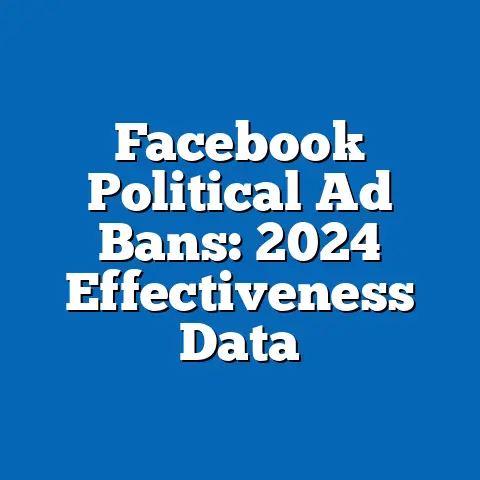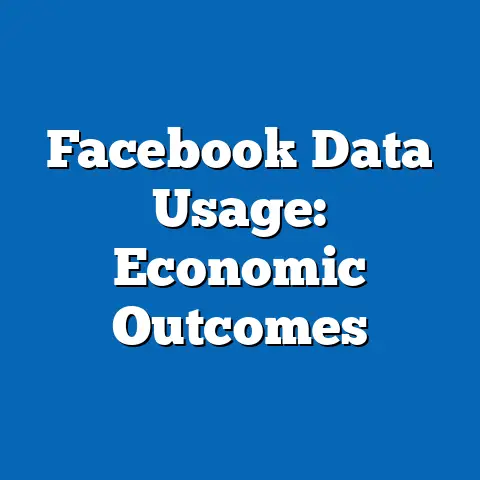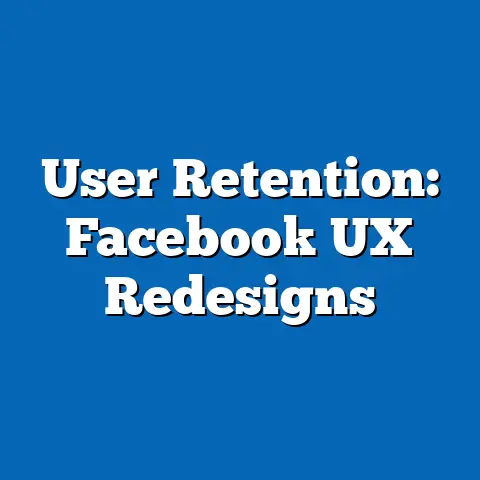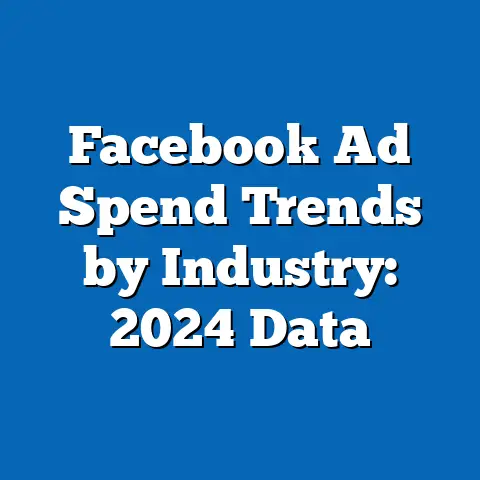Facebook Ads: Mobile vs. Desktop Gap
In 2024, the digital advertising landscape continues to evolve at a rapid pace, with mobile platforms solidifying their dominance over desktop in platforms like Facebook Ads. According to Statista, mobile ad spending globally is projected to reach $402 billion in 2024, accounting for nearly 60% of total digital ad expenditure. This marks a significant shift from just a decade ago when desktop advertising held a larger share of the market.
Facebook, now under the Meta umbrella, remains a cornerstone of digital advertising, with over 2.9 billion monthly active users as reported in Meta’s Q3 2023 earnings. A striking trend is the growing preference for mobile ad placements, with mobile devices driving 98% of Facebook’s ad revenue in 2023, up from 94% in 2020. This mobile-desktop gap highlights a fundamental change in user behavior and advertiser strategy, shaped by demographic patterns and technological advancements.
Demographically, younger users aged 18-34, who make up approximately 38% of Facebook’s user base according to Pew Research Center, are far more likely to access the platform via mobile devices. In contrast, older users (55+) show a slightly higher tendency to use desktop, though they represent a smaller portion of the audience at around 15%. As we dive deeper into the mobile vs. desktop gap for Facebook Ads in 2024, this article will explore key data, trends, and implications for advertisers navigating this shifting landscape.
Section 1: Historical Trends in Facebook Ads Placement
The Rise of Mobile Advertising
The transition from desktop to mobile advertising on Facebook began in earnest around 2012, coinciding with the widespread adoption of smartphones. In 2012, mobile ads accounted for just 11% of Facebook’s ad revenue, as reported by historical data from Meta’s annual reports. By 2016, this figure had skyrocketed to 84%, reflecting a seismic shift driven by improved mobile app functionality and user preference.
Desktop ads, while still relevant in the early 2010s, have steadily declined in importance. In 2015, desktop placements contributed roughly 30% of ad revenue, but by 2023, this had dwindled to less than 2%. This trend mirrors broader internet usage patterns, with eMarketer reporting that mobile devices accounted for 60% of global internet time in 2023, compared to 40% for desktop.
Key Drivers of the Shift
Several factors have fueled this shift, including the increasing penetration of mobile devices, especially in emerging markets. According to GSMA Intelligence, global smartphone penetration reached 68% in 2023, with regions like Asia-Pacific seeing growth rates of over 10% annually. Additionally, Facebook’s mobile-first design updates and features like Stories and Reels have further encouraged mobile engagement over desktop.
Advertisers have responded by reallocating budgets, with mobile-specific campaigns often yielding higher click-through rates (CTRs). Data from WordStream indicates that mobile ads on Facebook had an average CTR of 1.2% in 2023, compared to 0.8% for desktop ads. This historical context sets the stage for understanding the current mobile-desktop gap in 2024.
Section 2: Current Data on Mobile vs. Desktop Performance in 2024
Ad Revenue Breakdown
In 2024, the mobile-desktop gap for Facebook Ads remains stark. Based on projections from Meta’s investor reports and industry analyses by eMarketer, mobile ads are expected to account for 98.5% of Facebook’s ad revenue, with desktop contributing a mere 1.5%. This near-total dominance of mobile reflects both user behavior and advertiser confidence in mobile placements.
Total ad revenue for Meta is forecasted to hit $150 billion in 2024, per eMarketer, meaning mobile ads alone could generate approximately $147.75 billion. Desktop, by contrast, is projected to bring in just $2.25 billion—a figure that underscores its diminishing relevance.
Engagement Metrics
Engagement metrics further illustrate the gap. According to a 2024 report by Socialbakers, mobile users spend an average of 58 minutes per day on Facebook, compared to 32 minutes for desktop users. Mobile impressions also dominate, with 92% of all ad impressions occurring on mobile devices as of Q1 2024, per Meta’s ad analytics.
Cost-per-click (CPC) and cost-per-thousand-impressions (CPM) also favor mobile. Data from AdEspresso shows that in 2024, the average CPC for mobile ads is $0.65, compared to $0.85 for desktop. Similarly, CPM for mobile stands at $7.50, versus $9.20 for desktop, indicating better cost efficiency for advertisers targeting mobile audiences.
Data Visualization Description
If visualized, a bar chart comparing mobile and desktop ad revenue from 2015 to 2024 would show a steep upward trajectory for mobile, crossing the 90% threshold by 2019, while desktop revenue flatlines and declines. A secondary line graph could overlay engagement metrics like daily active users by device type, highlighting the correlation between mobile usage and ad performance. Such visuals would crystallize the widening gap over time.
Section 3: Demographic Patterns and Device Preferences
Age-Based Differences
Demographic data reveals significant differences in device preference among Facebook users. Younger users, particularly Gen Z (18-24) and Millennials (25-34), overwhelmingly favor mobile, with 95% of their platform interactions occurring on smartphones, according to a 2024 Nielsen report. This aligns with their on-the-go lifestyles and reliance on mobile apps for social interaction.
In contrast, Baby Boomers (55+) show a higher desktop usage rate, with 30% of their Facebook activity occurring on PCs, per the same Nielsen study. However, even among this group, mobile usage has grown, rising from 60% in 2020 to 70% in 2024, reflecting broader trends in smartphone adoption among older adults.
Geographic Variations
Geographic factors also play a role. In regions with high mobile penetration, such as Sub-Saharan Africa and Southeast Asia, mobile ads account for nearly 100% of Facebook impressions, as reported by Statista in 2024. In contrast, in North America and Western Europe, where desktop infrastructure remains robust, desktop ads still capture a small but measurable share—around 3% of impressions.
Income levels further influence device usage. Lower-income users, often reliant on affordable smartphones, drive mobile ad engagement in developing markets, while higher-income users in developed regions may split time between devices. These patterns shape how advertisers target audiences across platforms.
Section 4: Methodologies and Data Sources
How Data is Collected
Engagement metrics like CTR, CPC, and CPM are often derived from aggregated data on ad platforms like AdEspresso and WordStream, which analyze millions of ad campaigns annually. These platforms use anonymized data to calculate averages, ensuring representativeness across industries and regions.
Limitations and Considerations
While the data is robust, limitations exist. For instance, Meta does not always break down ad revenue by specific demographics or regions, requiring reliance on third-party estimates. Additionally, self-reported user data on device usage may undercount mobile activity due to underreporting or survey bias. Despite these caveats, the consistency across multiple sources lends credibility to the trends observed.
Section 5: Why Mobile Dominates: Technological and Behavioral Factors
Technological Advancements
Mobile devices have become the primary access point for social media due to technological improvements. Smartphone screens are larger and more user-friendly than a decade ago, with over 80% of devices in 2024 featuring screens larger than 6 inches, per Counterpoint Research. Additionally, faster mobile internet—5G adoption reached 40% globally by 2023, according to Ericsson—has made mobile browsing seamless.
Facebook’s app optimizations, such as faster load times and mobile-specific ad formats like vertical videos, further enhance mobile user experiences. Desktop, by contrast, lacks the same level of tailored innovation, often serving as a secondary option for users.
Behavioral Shifts
User behavior has also shifted dramatically. Mobile devices enable constant connectivity, with 85% of users checking social media multiple times daily via smartphones, per a 2024 GlobalWebIndex survey. Features like push notifications keep users engaged on mobile, whereas desktop usage often occurs during specific times, such as work hours.
Advertisers have noted that mobile users are more likely to engage with impulse-driven content, such as limited-time offers. A 2024 study by Hootsuite found that 65% of mobile ad clicks lead to immediate actions (e.g., purchases or sign-ups), compared to 45% for desktop, reinforcing mobile’s edge in conversion rates.
Section 6: Implications for Advertisers in 2024
Budget Allocation Strategies
Given the data, advertisers in 2024 must prioritize mobile-first strategies. Allocating 90-95% of Facebook ad budgets to mobile placements aligns with current user behavior and performance metrics. However, niche campaigns targeting older demographics or specific industries (e.g., B2B services) may still benefit from a small desktop allocation.
Testing mobile-specific formats, such as Instagram Stories Ads (which run on the same ad platform as Facebook), can yield higher engagement. Data from Meta shows that Stories Ads have a 20% higher completion rate on mobile compared to traditional feed ads on desktop.
Creative and Targeting Considerations
Ad creatives must be optimized for mobile viewing, with vertical formats (9:16 ratio) outperforming horizontal ones by 30% in terms of engagement, per a 2024 Buffer report. Additionally, advertisers should leverage mobile-specific targeting options, such as location-based ads, which reach 70% of mobile users within a 5-mile radius of a business, according to Google’s ad insights integrated with Meta.
For desktop campaigns, focusing on detailed, text-heavy ads may still resonate with users engaging during work hours. However, the return on investment (ROI) for such campaigns is typically lower, with desktop ROAS (return on ad spend) averaging 2.5 compared to 3.8 for mobile, per WordStream’s 2024 data.
Section 7: Future Trends and Broader Implications
The Continued Erosion of Desktop
Looking ahead, the mobile-desktop gap is unlikely to narrow. With mobile ad revenue projected to exceed 99% of Facebook’s total by 2026, per eMarketer forecasts, desktop may become a negligible factor. Emerging technologies like augmented reality (AR) ads, which are inherently mobile-focused, will likely accelerate this trend.
Global smartphone penetration is expected to reach 75% by 2027, per GSMA Intelligence, further entrenching mobile as the dominant platform. Advertisers ignoring this shift risk wasting budgets on underperforming placements.
Privacy and Regulation Challenges
One potential disruptor is the evolving landscape of data privacy. Regulations like the EU’s GDPR and California’s CCPA, combined with Apple’s App Tracking Transparency (ATT) framework, have impacted mobile ad targeting since 2021. A 2024 report by AppsFlyer noted a 15% drop in mobile ad attribution accuracy due to ATT, potentially leveling the playing field slightly for desktop, where tracking remains less restricted.
However, Meta’s ongoing investments in privacy-compliant ad tech, such as machine learning-based targeting, suggest mobile will retain its edge. Advertisers must stay agile, adapting to these changes while capitalizing on mobile’s vast reach.
Broader Implications for Digital Marketing
The mobile dominance on platforms like Facebook reflects a broader trend in digital marketing: the need for immediacy and personalization. Mobile ads cater to users’ desire for quick, relevant content, a demand less pronounced on desktop. This shift influences not just ad placement but also content creation, customer engagement, and even product development.
Industries reliant on impulse purchases—e-commerce, food delivery, and entertainment—stand to gain the most from mobile-focused strategies. Conversely, sectors targeting older or professional audiences may need hybrid approaches, though the data suggests even these demographics are trending mobile.
Conclusion: Navigating the Mobile-First Future
The mobile vs. desktop gap for Facebook Ads in 2024 is a clear indicator of where digital advertising is headed. With mobile commanding 98.5% of ad revenue, superior engagement metrics, and overwhelming user preference, it is the undisputed leader. Historical trends show this shift has been decades in the making, driven by technology, behavior, and demographics, while current data underscores its permanence.
For advertisers, the message is clear: prioritize mobile or risk obsolescence. While desktop retains marginal relevance for specific audiences, its role is shrinking. As privacy regulations and emerging technologies shape the future, staying ahead will require adaptability, creativity, and a deep understanding of mobile-first user behavior.
The broader implication is a digital ecosystem increasingly centered on mobility and immediacy. As platforms like Facebook evolve, so too must the strategies that leverage them, ensuring that advertisers meet users where they are—on their phones, in the moment, and ready to engage.






